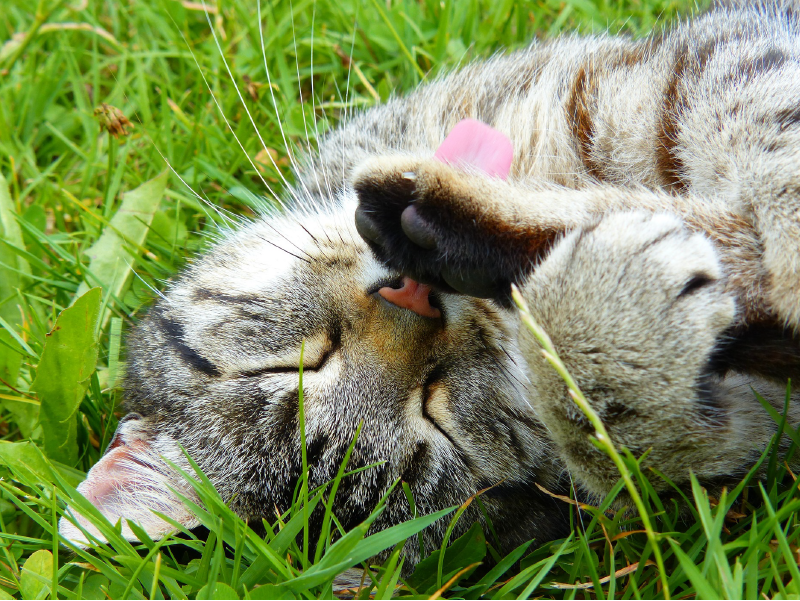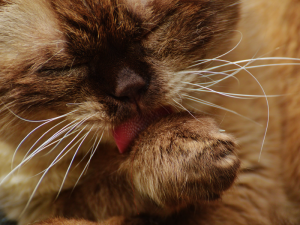Grooming Self-Groomers

 Although cats are famously fastidious self-groomers, committed cat guardians should work hand in paw with their precious pets to improve on Mother Nature’s instinctual behavior.
Although cats are famously fastidious self-groomers, committed cat guardians should work hand in paw with their precious pets to improve on Mother Nature’s instinctual behavior.
Grooming, which includes brushing, bathing and nail clipping, on a regular basis not only improves the health of your cat’s skin and coat, but it also allows you to keep a watchful eye on her overall health. And because grooming sessions should be mutually enjoyable experiences, schedule them when your pet is most relaxed, usually after exercising or eating.
To accustom your cat to being handled, slowly, gently and patiently stroke every part of her body — ears and tail, belly and back — but especially her feet. Keep your initial sessions brief (from five to ten minutes), gradually lengthening them as she grows more comfortable with the routine.
Brushing
Regular use of a brush or comb helps keep your cat’s fur in good condition by removing dirt, spreading natural oils throughout her coat, preventing tangles, and keeping her skin clean and irritant-free.
Cats with short hair require only weekly brushing, while those with long hair should be brushed daily. Begin by combing your cat’s chest, belly and legs, taking care to be especially gentle near her chest and belly. Then brush her fur in an upward motion with a bristle or rubber brush. To properly brush her tail, make a part down the middle and brush the fur out on either side.
If your cat’s coat becomes greasy and oily or if she’s gotten into something sticky or stinky, a bath is a must. And since cats aren’t overly fond of water, to put it mildly, extra patience and an extra pair of hands may be musts as well.
Begin with a vigorous brushing to remove all dead hair, mats and tangles from your cat’s coat. Then, after placing a rubber bath mat in your sink or tub, fill it with three to four inches of lukewarm water and gently lower your cat into the water. If you have a spray hose, wet her body thoroughly, taking care not to spray her ears, eyes or nose. If you don’t have a spray hose, use a large plastic pitcher instead. Gently massage in a cat-specific shampoo, working from head to tail, rinse her thoroughly while again avoiding her ears, eyes and nose, and dry her with a large towel.
Nail Clipping
To accustom your cat to what may be an unpleasant sensation, pamper her first with the pleasures of a daily foot massage. Rub your hand up and down her leg, one leg at a time, and then gently press each individual toe. Be certain to reward her with tender praise and tasty treats as you do this. While each cat is different, hopefully, within a week or two, yours will accept nail clipping as part of her own, well earned beauty regime.
Start by applying gentle pressure to the top of her foot and the cushioned pad underneath, which will cause her to instinctively extend her claws. Use sharp, high-quality cat nail scissors to cut off the white tip of each nail before the point where it begins to curl. Take care to avoid the quick (a vein that runs into the nail), visible as a pink area through the translucent nail. Should you accidentally cut into the quick, apply some styptic powder to the area to stop the bleeding.
And your reward for all of this loving attention? A purr-fectly polished puss, dressed to the nines, and looking like the “cat’s meow.”

